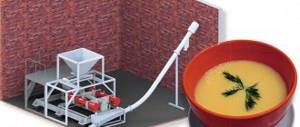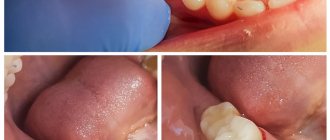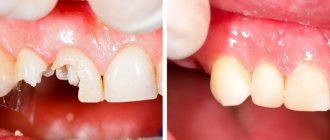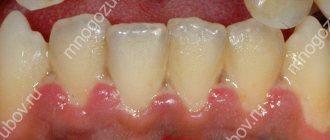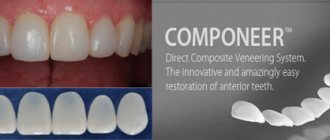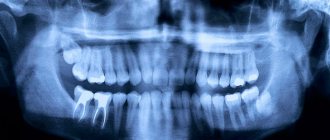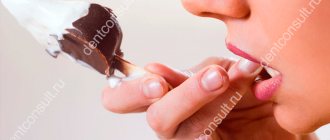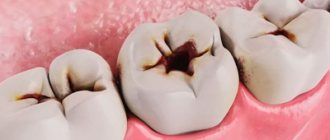Can't boast a Hollywood smile? Don't like the color of your tooth enamel? Did a tooth break and ruin your smile? There is an exit! These problems can be solved by artistic dental restoration. This is simply a magical procedure! You can restore the previous shape and color of one or several teeth at once in just one visit to the dentist.
Teeth are restored using two technologies. The first method is indirect, when ceramic plates are used to restore teeth. They are made by dental technicians in the laboratory.
The second method is direct. According to it, tooth extension occurs directly in the patient’s oral cavity. For this purpose, composite or adhesive materials are used.
Teeth renewed in this way (or regrown) are practically no different from real ones: they are just as strong, beautiful, natural and durable. However, they acquire all these qualities only if the restoration was carried out in compliance with all the necessary technological requirements inherent in a particular technique.
The cost of the procedure is pleasantly surprising, especially if you take into account its result: beautiful teeth without chips or cracks. In addition, restoration can also eliminate defects such as diastema and incorrect tooth length.
There are indications for “tooth augmentation”:
- Tooth decay of more than 1/2 crown. In this case, the tooth is restored with a pin or two in multi-rooted teeth (large molars),
- Aesthetic restoration of anterior teeth.
Teeth extension is an alternative to a crown, however, if the area of the carious process exceeds 2/3 of the tooth crown, then the tooth must be restored using a core pin insert (CSP). A stump pin inlay is an orthopedic structure that consists of a pin (cast in the laboratory) and a crown. FCS is more reliable than tooth restoration.
How to prevent staining
After complete cleaning of the tooth enamel, whitening is carried out if necessary. And only after that the color of the restoration material is selected. It finally hardens only after 2-3 days, and during this period after the extension it is important to prevent staining of the new teeth. For this:
- Do not drink drinks containing dyes (cola, Fanta, etc.), juices, coffee;
- It is necessary to exclude the consumption of certain vegetables and fruits (carrots, beets, oranges, etc.).
Smoking can also affect the color of the teeth after extensions. The hardening of the restoration material depends on the complexity of the procedure, so a specialist will tell you the exact period on an individual basis. After the period of restrictions has expired, you can return to your normal diet.
Contraindications for tooth augmentation:
- Bite pathology – straight, cross and other types of malocclusion. The teeth do not close properly, which causes additional stress. In this regard, the risk of restoration fracture increases,
- Poor oral hygiene. If a patient does not take good care of his teeth, the doctor has every right to refuse him restoration or a guarantee for work. Poor hygiene significantly reduces the service life.
- Large area of tooth decay,
- Cystic forms of periodontitis, especially periodically exacerbating periodontitis.
How to choose a soft toothbrush
If a person has teeth after extensions, then he is recommended to use soft brushes, which are usually designated as “Soft”. In addition, it should be noted that brushes with different levels of bristles clean better than those with one or two levels.
Extension is a modern method of restoring deformed and lost teeth, and it is also completely painless. If you follow the above recommendations, then such dental elements will last a long time and will be able to restore the former beauty of your smile.
Implant Care Tools
Among dental products you can find many convenient tools that will make oral care easier. For example, a brush
. This tool, simple at first glance, now has a lot of variations, tailored to any needs:
- bunch brushes;
- interdental brushes (interproximal brushes);
- corner brushes;
- brushes with a narrow head.
Additionally, there are several types of dental floss. One of them was called Super Floss. This floss is designed for cleaning bridges and wide interdental spaces. Its difference from ordinary thread (floss) lies in the design of three components: a thin thread, a rigid holder and a spongy fiber. The spongy fiber, passing between the teeth, gently cleanses plaque from the part of the tooth that is located below the gum line. And the rigid holder is very convenient if you want to clean the area under a removable denture without removing it.
Another invention of the 21st century for caring for teeth and gums is oral irrigators
. These are small devices that create a thin stream of water under pressure, with which you can easily rinse the space between your teeth and gums.
Rest assured that with regular and proper cleaning, your implants will last you a lifetime. At NovaDent dental clinics you can get competent advice from specialists to choose the most suitable dental implant and receive recommendations regarding dental implant surgery.
Rules of conduct after installing crowns
There are several rules that you can follow to keep your mouth healthy:
- Brush your teeth twice a day – immediately after waking up and before going to bed.
- Rinse your mouth if possible after every meal. This will get rid of food debris and slow down plaque formation.
- Thoroughly clean areas where plaque and food may accumulate. We are talking about the space under the hinged crown of the bridge. To do this, you can use an irrigator, brushes and other devices.
- You should avoid eating too hard foods and chewing on non-food items. Nail chewing, nuts, candy chewing – all of these should be avoided to maximize the life of your crowns.
- You should reduce your consumption of coffee, black tea, red wine, and other coloring foods.
- Gum care is also a very important attribute of healthy teeth. Rinsing and careful attention to the condition of soft tissues are required.
- Cleaning your tongue is a very useful activity. Plaque also accumulates here and must be removed.
Careful care will help maintain health and maximize the service life of any restorations.
Why and when is extension needed?
The technique involves using dental material to fill in the missing area of the tooth. Based on this, extension is necessary in cases where there are corresponding defects. In this case, the technique will be effective both with minimal tooth abrasion and with significant destruction.
Main indications for extensions
Indications for extension are the following factors:
- Tooth decay due to various pathological processes, caries, traumatic injury;
- The need to correct any natural anomalies, including large gaps between teeth;
- Increased tooth wear;
- Unsatisfactory tooth size;
- Deterioration in tooth aesthetics due to fluorosis, when white spots on the tooth surface can only be corrected using this technique.
All these factors predispose a child to undergo tooth augmentation. Due to the mobility of children and frequent injuries, dentists most often have to build up their front teeth.
Extension techniques
There are several methods of teeth extension. Their choice is determined by the clinical situation and financial capabilities of the patient. Teeth extension using photopolymers is one of the most popular techniques. It is based on the unique properties of the material, its ability to harden only when exposed to light radiation. This allows the specialist to carry out all manipulations clearly and slowly. In addition to strength, complete restoration of aesthetic characteristics is ensured. Artificial fragments look the same as natural dental tissue. In addition, it will be possible to grow a tooth quickly and without harm to the enamel.
Extension using pins is a less preferable method, since the reliability of such a tooth is lower. However, since the procedure avoids tooth extraction and implantation, it also has every chance of being used. It involves installing a pin into the root canal of the tooth, placing a composite material around it and giving it the necessary shape.
An even more effective method is to preserve the tooth by installing an inlay, manufactured in a dental laboratory in accordance with the specified characteristics. This procedure is relevant when up to sixty percent of the hard tissue of a tooth or several of its walls is lost. Its implementation is within the competence of the orthopedic dentist.
Other orthopedic techniques are also relevant. Because severely damaged teeth lose strength and risk breaking completely, they are covered with crowns. Installing an artificial prosthesis allows you to evenly distribute the load on the tooth, extending its service life. In addition, crowns can be installed on teeth for aesthetic purposes. Particularly successful external characteristics will be achieved if ceramics are used to make the crown.
If there are prerequisites such as chips and cracks, the presence of a diastema, insufficient aesthetics of the front teeth, fluorosis, the situation can be improved with the help of orthopedic techniques, veneers or lumineers. These microprostheses are planned to be attached to the front tooth surface, which will completely change it, give it the desired shape and color.
Pros and cons of extensions
The objective advantages of artistic restoration include:
- safety (the method is suitable even for children),
- possibility of restoration even with significant chips,
- high degree of strength of the extended part,
- natural appearance.
As for the disadvantages, these include the comparative high cost. Despite the variety of methods and price categories, most often this procedure is not cheap.
Another disadvantage is that to ensure safe conditions for the restored area, it becomes necessary to wear a mouth guard during sleep.
How to grow your front teeth?
There are several ways to build up your front teeth. In most cases, it will be possible to restore functional and aesthetic characteristics using photocomposites. By applying the material layer by layer to the defect site, the doctor can completely eliminate the defects. The only negative: in order to preserve the aesthetic properties for as long as possible, you will have to adhere to some dietary restrictions at home, as well as regularly seek professional teeth cleaning.
If more than 70% of the crown part of the tooth is missing, then it is ideal to turn to an orthopedic technique. Modern ceramics used to make crowns make it possible to perfectly imitate the texture of a tooth and achieve a match in color and transparency to natural enamel.
Another current way to correct teeth in the smile area is to build teeth using veneers. They can be composite and made by a doctor directly in the patient’s mouth, as well as ceramic. The production of these onlays takes place in a dental laboratory, after which they are glued to the teeth using special cement. The thickness of the linings is small. However, in order not to excessively increase the tooth surface with such a procedure and to ensure strength, grinding of the tooth surface will be required. Videos available in the public domain will allow you to verify the careful approach of specialists to such a procedure.
Advantages and disadvantages of extensions
The benefits of dental extensions include:
- Possibility of ensuring reliable tooth restoration. In some cases, an extended tooth is not much inferior in wear resistance and durability to a natural one.
- Natural result. Thanks to modern materials, it is possible to choose not only the desired shade of the tooth, but also provide the necessary transparency. The extended tooth will not be distinguishable from its neighbors. A natural smile is guaranteed.
- High efficiency of the procedure. The result is achieved even if even a tooth from which practically nothing remains is subject to restoration.
- Possibility of quickly obtaining results. Depending on the chosen method, 1-2 visits to the doctor are enough.
Cons of teeth extensions:
- Quite a high cost;
- The inability to clearly determine how long the service life of a tooth will be;
- Dependence of results on the professional skills of the doctor.
Contraindications
There are few contraindications to dental extensions. Among them:
- Complete destruction of the crown part of the tooth;
- Tooth mobility due to damage to periodontal tissues;
- Bruxism;
- Allergic reactions to the materials used;
- Severe dysfunction of the temporomandibular joint.
The decision on the possibility of using a particular technique in each specific case is made by the dentist.
FAQ
- What kind of doctor does dental extensions? Depending on the technique used, a dentist-therapist or an orthopedist will solve the problems.
- Will it be possible to build up baby teeth? Is such a procedure necessary? At the present stage, using modern filling materials, it is possible to solve the problem with baby teeth. However, treatment is complicated by the fact that it is difficult to ensure a static position for the child during the manipulation. Often you have to resort to anesthesia. The need for such a procedure is justified by the fact that ignoring it will lead not only to deterioration of aesthetics, but also to problems with bite and diction disorders.
Price
The cost of tooth augmentation varies widely depending on the technique used. In this case, the most accessible way is to use therapeutic approaches. The use of orthopedic techniques will be more expensive. Due to the complexity of the technology, the installation of ceramic veneers will be especially expensive. The price of such a procedure also increases due to the fact that the entire smile area is subject to correction. To achieve the desired result, you will need to install about 8-10 units of overlays. At the same time, if you are counting on having your teeth augmented in a center whose core business is to provide the population with high-quality but affordable services, contact the Evita clinic.
| Cosmetic tooth restoration with light-curing materials | 9600 rub. |
| Ceramic inlay (1 unit) | 35400 rub. |
| Ceramic veneer (1 unit) | 48,000 rub. |
| Lumineers veneer (1 unit) | 82700 rub. |
| Veneer Emax (1 unit) | 48,000 rub. |
How much does it cost to restore teeth using extensions?
The average cost of restoration of chewing or front teeth with filling materials is from 5,800 rubles.
The price of restoration using ceramic crowns and inlays is from 12,500 rubles per unit.
The cost of restoring a tooth using a composite veneer starts from 11,500 rubles.
The price of restoring a tooth with a ceramic veneer plate is from 29,500 rubles per unit.
To this cost it is worth adding diagnostics (up to 2,500 rubles), as well as the cost of teeth cleaning (about 6,000 rubles) before restoration and possible treatment.
Sign up for a consultation with a dentist at the Zuub clinic to find out exactly how much it costs to build up a specific unit (front, incisor, chewing, etc.), and how much the treatment will cost. If a tooth is damaged, it needs to be restored, and not wait until it becomes a serious problem! Contact us!
Indications and contraindications
The procedure is recommended for the following problems:
- cracks and chips,
- enamel damage of various types,
- injuries resulting in disruption of the integrity of bone tissue,
- the impossibility of restoring the shade of enamel through cleaning and whitening procedures,
- malocclusion,
- high degree of enamel wear,
- loss of part of a tooth due to caries.
There are also situations in which extensions are contraindicated:
- the patient has individual allergic reactions to the filling materials used,
- the impossibility of isolating the area of the oral cavity where the extension is expected from moisture (under such conditions it is impossible to achieve high-quality drying and fixation of the composite),
- bruxism (if a crack in the enamel appears due to grinding of teeth during sleep, it is necessary to initially get rid of bruxism; otherwise the likelihood of chipping of the extension material is quite high),
- early age (pins are not installed for children; other acceptable methods of extension are not used for untreated caries, as well as some other diseases).
What are the dangers of improper care after prosthetics?
Bad breath and visible plaque are only superficial manifestations of poor hygiene. In fact, the consequences are much more serious:
- Plaque, accumulating near the surface of the gums, contributes to the formation of tartar.
- Tartar, in turn, is a breeding ground for bacteria.
- The waste products of harmful microorganisms have a destructive effect on the natural tissues of teeth and soft tissues, and provoke inflammation of the gums.
- When the gum becomes inflamed, its structure becomes loose. Such gums are not able to protect the cervical area of the teeth.
- If left untreated, seemingly harmless inflammation of the gums leads to much more serious consequences - periodontitis, the formation of gum pockets.
Simply put, dental hygiene and oral health are inextricably linked.
